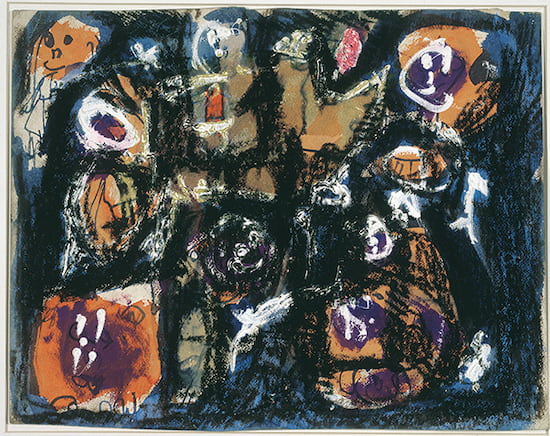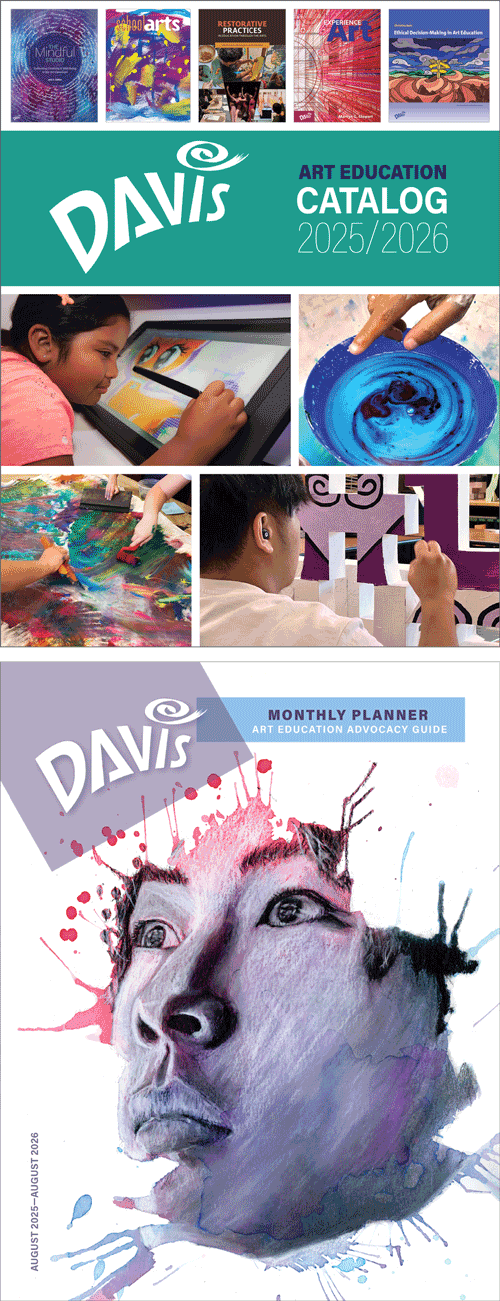Jewish American Heritage Month: Gandy Brodie
Jewish American Heritage Month is celebrated in May to recognize and honor the contributions of Jewish Americans to the United States. It's a time to celebrate the diverse experiences and rich history of Jewish Americans across various fields like art. Since colonial times, artists of Jewish heritage have made significant contributions to American art history.
 |
| Gandy Brodie (1925–1975, United States), Untitled , ca. 1953. Gouache on paper, 11 ¼" x 14 ¼" (28.6 x 36.2 cm). Buffalo AKG Art Museum, Buffalo, NY. © 2025 Artist or Estate of Artist. (AK-1108) |
Gandy Brodie’s paintings are characterized by thick layers of paint that culminate in abstract, yet subtle, depictions of everyday objects. The range of subjects extends from flowers and trees to tenement walls in New York’s Lower East Side, where Brodie grew up. Brodie painted some subjects such as anemones and birch trees repeatedly in his body of work. His work process was slow as he built up his canvases into uneven surfaces of smooth paint. The heavily worked surfaces of Brodie’s paintings are reminiscent of tenement apartment walls covered with multiple layers of paint.
There is a dichotomy in Brodie’s works in his rejection of irony or emotion in his subjects, while expressing fragility or vulnerability without self-pity. His depiction of single objects painted in delicate light and expressive color expresses a sense of both loneliness and a joy in the very process of painting. The influence of Georges Rouault (1871–1958) is unmistakable in this untitled painting in its thick, gestural black lines surrounding bright colors.
During every period in the history of art, there are artists whose work does not find a specific place within any style or movement. These artists—either trained or self-taught—may study under well-known artists and interact with members of specific groups. However, artists with a particularly personal vision that is little affected by the “trend of the moment” produce bodies of work that are compelling for what they are and not for their associations. In the end, their work shows a dedication to their craft in an unflinching self-assurance of process. Brodie is one such artist.
Gabriel Solomon Brodie was born in Brooklyn, New York, to a family of Romanian Jewish origin. Although he dabbled in painting and drawing as a child, Brodie’s teen years were spent consumed with jazz and bebop music. After seeing works by Vincent van Gogh (1853–1890) and Pablo Picasso (1881–1973) in 1946, he taught himself how to paint, learning from the many works of art he saw in New York museums and galleries. Early on, he was drawn to the work of Paul Klee (1879–1940) for its quiet poetry. He may have acquired his gestural brushwork from the unavoidable influence of Abstract Expressionism during the late 1940s and early 1950s.
After visiting Paris in 1950 and Florence in 1951, Brodie decided that he was a dedicated artist. In Florence, he was overwhelmed by the tradition of Renaissance painting. While in Paris he was drawn to artists whose work indicated some sort of anguish, particularly Chaim Soutine (1893–1943), Rouault, and van Gogh. Brodie pinpointed his personal “anguish” as a feeling of being in-between various methods of painting, none of which resembled his own.
Brodie did not consider his work to be Abstract Expressionist, although he is often called “second generation.” Nor were his abstracted realist works “current” with Pop Art, Minimalism, Color Field, or Post-painterly Abstraction, movements that trended in the 1960s. In his paintings, the image emerges from the mottled surface and thick layers of paint. This is far removed from the immediacy of Abstract Expressionism’s active surfaces, Pop Art’s familiar and instantly accessible images, and Minimalism’s in-your-face abstraction.
Correlations to Davis programs: Explorations in Art 2E Kindergarten: Unit 1.8; Explorations in Art 2E Grade 3: 2.7; Explorations in Art 2E Grade 4: 6.7; Explorations in Art 2E Grade 5: 6.4; Explorations in Art 2E Grade 6: 5.1; Experience Painting: pp. 36–39; Discovering Drawing 3E: p.38, p. 254; Exploring Visual Design 4E: pp. 114–115; The Visual Experience 4E: 4.2; Discovering Art History 4E: 14.2

Comments